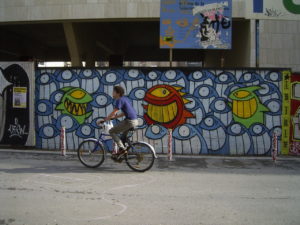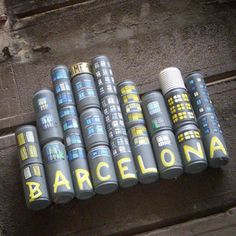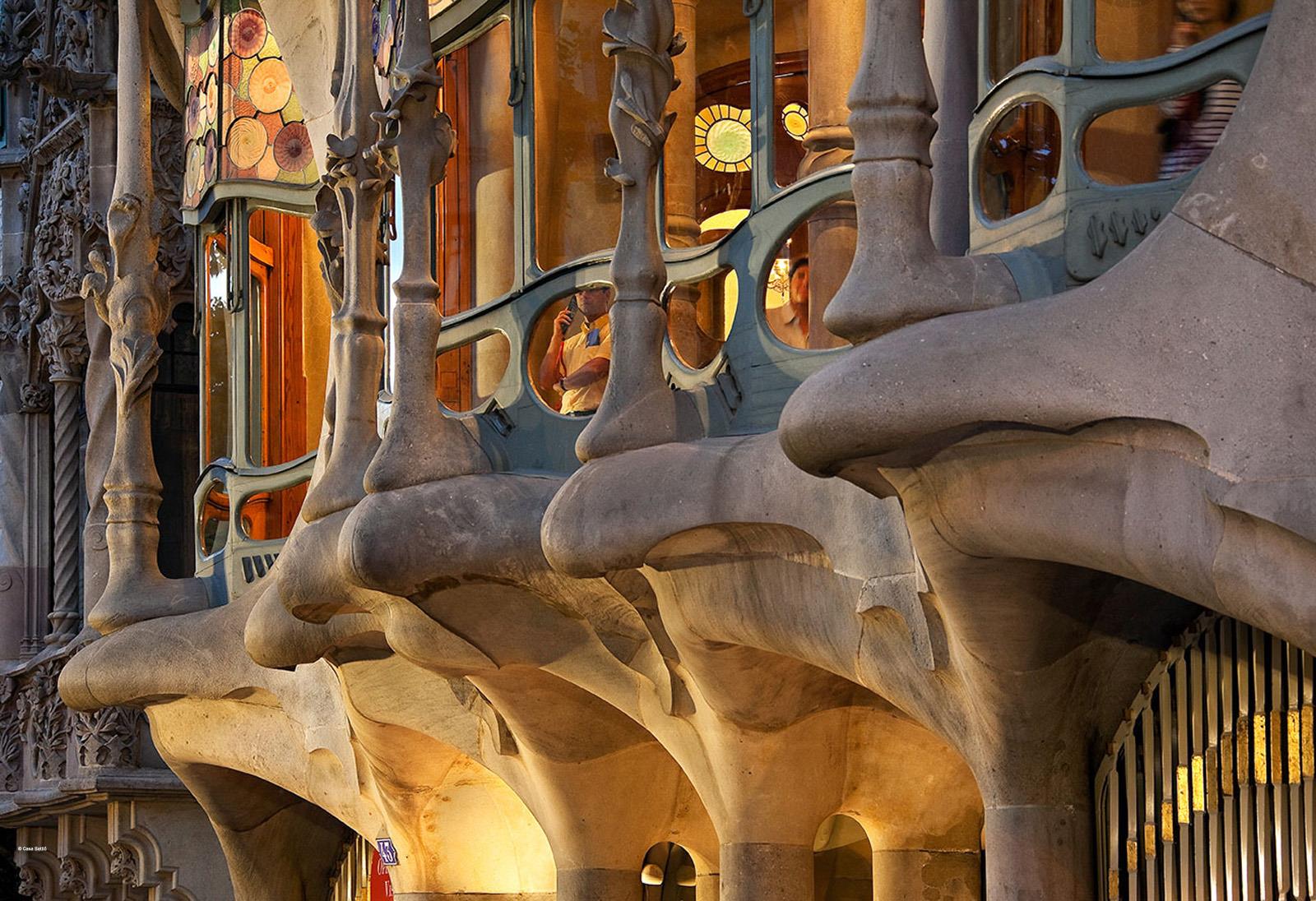As it happens in almost any large city in the world, Barcelona’s walls have been marked by the work of street artists. Most of the works don’t mean anything to the passersby, but if you take the time to hear the story behind some of the pieces, you can actually discover the art in them. I recently went on a tour of El Born and the Gothic quarter with someone who knows the story and the names behind the works. During the tour I had the opportunity to learn a lot about the street art culture of Barcelona, and see works I had walked by dozens of times, looking around me but not seeing. To share with you a little bit of what I learned, ShBarcelona‘s next article has the names of some of the main street artists of Barcelona, or how I like to call them, Barcelona’s Street Art Royalty.
Related article: Take a Graffiti Tour of Barcelona
Table of Contents
El Pez
Did you ever stumble into a one-eyed fish smiling at you? Chances are you were looking at an El Pez original. The artist’s work started appearing in Barcelona towards the end of the 90’s, a happy-looking fish created to make people feel good and smile.
Vegan Bunnies
Vegan Bunnies’ works are usually easy to identify because they almost always feature… you guessed it, bunnies! The female artist responsible for Vegan Bunnies has created her bunny character as a fluffy, kind creature, but also kind of a bad-ass rebel. With her work, the artist wants to send an antifascist, anti-sexist, anti-discriminatory message.
Related article: Bamboo Bike Tours
Francisco de Pájaro
Francisco de Pájaro may be one of the biggest cases of success in Barcelona’s street art history. Stories about the artist say that he tried to have his work presented in a variety of galleries in Barcelona but was rejected. Fed up, de Pájaro created his own revolution. He started using garbage, tossed pieces of wood and anything else he could find on the streets to create art that would stay there, on the street, for everyone to see. And that is how Art is trash was born. His works started calling the attention of people on the street, including one of the gallery owners who had previously denied de Pájaro the opportunity of showing in his venue, and what de Pájaro thought was the end, actually became the pivotal point in his career. Today Francisco de Pàjaro’s work is internationally famous.
Where have you seen the best street art in Barcelona?























Leave a Comment